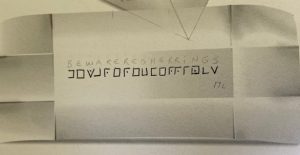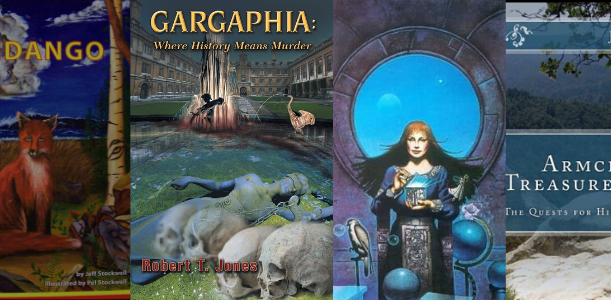
Clue, Hint, Red Herring, or Rabbit Hole?
When picking up an armchair treasure hunt book, sometimes the most difficult task to making a solution is to decide if something is an intended Clue, Hint, Red Herring, or just a Rabbit Hole.
What is the difference between these terms? And how do we know which is which? Let’s take a look.
First, let’s define the terms.
What’s a Treasure Clue?
The dictionary defines clue as, ‘A piece of evidence or information used in the detection of a crime or solving of a mystery.’
In the case of a treasure hunt, a Clue is a ‘item’ added within the ‘treasure hunt’ that is intended to be found, and if understood properly, will lead you closer to a final solution.
Clear enough.
What’s a Hint?
In most ‘treasure hunts’, this is very much like a ‘Clue’. The dictionary defines a hint as ‘a slight or indirect indication or suggestion’. So you could say a ‘hint’ is a bit weaker piece of ‘evidence’ for solving the ‘treasure hunt’.
In the case of Forrest Fenn’s The Thrill of the Chase treasure hunt, Forrest said “There are hints in my book that will help you with the clues, but… a clue will point you toward the treasure chest, and a hint will just help you with the clues, if you can understand that.”
So a hint could help in finding a solution, but maybe not as directly as a ‘Clue’ will.
Simple enough.
Now we get into those terms that cause us, as searchers, the most problems. Red Herrings and Rabbit Holes.
What’s a Red Herring?
A Red Herring in an Armchair Treasure Hunt is a deliberate distraction or mis-direction placed in the Treasure Hunt by the creator. Red Herrings often come across or appear as Clues but will NOT lead to solving the mystery.
In most cases that is. In The Whistle Pig Treasure Hunt (unsolved since 2003), on page xiii, it is written, “Then again investigating a herring may prove just as valuable as locating a key.” Maybe Red Herrings help with discovering a solution for that hunt. Who knows? It isn’t solved yet. But, then, if Red Herrings helped were they really ‘Red Herrings’. Hmmm….? That could be a Rabbit Hole we don’t want to go down. Let’s move on.
Searchers often ask creators, or at least like to be warned, if there are, or are not, any Red Herrings involved in the hunt. Sometimes the creators let searchers know.
In The Ultimate Quest a slip of paper was decoded via the Pig Pen Cipher which stated, “Beware of Red Herrings”. Ok, we will. But….. we still haven’t found the ‘GrailKeeper’. He’s been hidden since 2001. All we know is he’s in the UK. (or was- this hunt has gone into the ‘Unsolved Mysteries’)

And in The Oracle Treasure Hunt (unsolved since 2005), Pete Wilder, the creator, was asked if there are Red Herrings in the book, and he replied, ‘Oh Yes!’. Lots of discussions still on this hunt on the MW Forum.
The term Red Herring is believed to originate from the early 1800’s. William Cobbett used the term in a story where a boy used a red herring to throw off the scent of a hare from chasing hounds. Herring, a type of fish, when smoked, turns red. They can have a very strong, lasting, smell to them. So if dragged against the ground, the smell of the ‘red herring’ can lead away from the intended prize.
True enough. Now for a Rabbit Hole.
What’s a Rabbit Hole?
A Rabbit Hole might feel like a Red Herring, however, it was not the intention of the Treasure Hunt’s creator to lead a searcher down it. A searcher allows himself to go down it all by himself.
The definition of a Rabbit Hole, in a metaphorical sense, is a long and winding exploratory path with many connections and offshoots. These tunnels often are very time consuming and will not lead to the intended solution of a treasure hunt. No matter how enjoyable or connective they may turn out to be items in the hunt.
Fair enough.
So when working on a Treasure Hunt, how can a searcher tell which is which? The answer is ‘most times they can’t’.
And that is why trying to solve armchair treasure hunts can be challenging.
But there are some red flags you might be going down a rabbit hole or following a red herring. Eventually, the path will become so obscure or come to a dead end, that you can just say, ‘Enough’, and crawl back out of those places. From these experiences, you might learn to catch yourself from following another one, sooner the next time.
The solution to an armchair treasure hunt, often times, turns out to be very elegant and simple in hindsight. If any path leads away from ‘the clue’ being ‘easily understood and followed for finding a solution’, it might be the path you are on, is not a clue. 🙂
So there you have what is a clue, hint, red herring, and rabbit hole in treasure hunting!
Best of luck with all that you seek! Always Treasure the Adventure!
.

